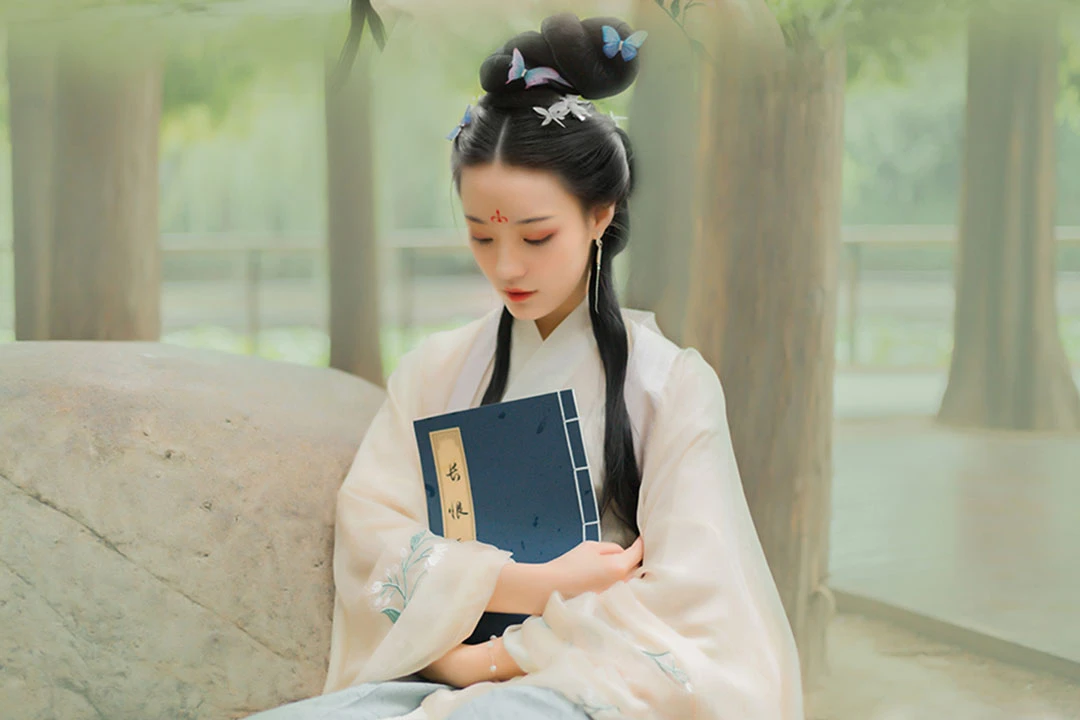In the annals of Chinese history, the Ming Dynasty stands as a beacon of cultural richness and artistic expression. Beyond its political and economic achievements, the Ming era is also celebrated for its distinctive and elaborate clothing styles that reflected the societal hierarchy and cultural sophistication of the time.
The genesis of Ming Dynasty hanfu attire can be traced back to the visionary Ming Taizu, Zhu Yuanzhang. Embracing the traditions of the Han people, he formulated a dress code that drew inspiration from the Zhou and Han dynasties while incorporating elements from the Tang and Song dynasties.
One notable innovation during the mid to late Ming period was the introduction of unprecedented styles like the stand-up collar and the widespread use of buttons in conspicuous areas of garments. Some of these styles and features have endured through the ages, maintaining their legacy in contemporary fashion.
The attire of government officials during the Ming Dynasty was a testament to the strict hierarchical structure of the time. Adorned in black gauze hats and round-collared robes, officials adhered not only to prescribed colors but also adorned their robes with patches denoting their rank. The belts worn by officials varied in quality, echoing the hierarchy they occupied.
Scholars, known as “shusheng,” often donned straight-cut robes or flowing garments with headpieces. Commoners, on the other hand, favored short garments, small hats, or netted scarves.
Women’s Apparel
Noble women in the Ming Dynasty often wore voluminous red-sleeved robes, while common women were restricted to peach, purple, green, and other light colors. Everyday attire consisted of short jackets, wide skirts, adorned with silk sashes and embellished with gold and jade pendants, along with accessories like cloud-shaped shoulder coverings and “bijia” (a large vest).
Innovations in skirts included the introduction of the “phoenix-tail skirt,” “pleated skirt,” and the exquisite “hundred-pleat skirt.” The latter involved selecting various colored satin strips, each embroidered with floral patterns, creating a vibrant display when assembled into a skirt with a belt, earning the name “phoenix-tail skirt.”
Ming Dynasty attire featured prominent accessories on the chest, including the “pendant collar,” “seven things” attached to the front collar, and the “jingbu” that produced sound while walking, collectively referred to as “miscellaneous ornaments.” A distinctive accessory was a chain with four items hanging: tweezers, toothpicks, earpicks, and a small knife—practical tools for women.
Ming Dynasty Embroidery
“Ming Huidian,” an official compendium of Ming regulations, recorded that noblewomen’s garments were made of “various colored silk, gauze, and crepe according to usage.” Common women faced fabric restrictions, limiting them to coarse purple cloth (“zhi”) even for ceremonial occasions, with a ban on gold embroidery. The vividness of clothing was discouraged, favoring pastel shades like purple, green, and peach, while vibrant reds and yellows were prohibited.
Male attire showcased broad black straight-cut robes for adults, adorned with square flat-topped hats. Commoners wore short coats and headscarves made of blue cloth, with jackets featuring wide edges. Officials donned round-collared robes made of cloud-patterned silk, sometimes accompanied by an additional cloud-patterned outer garment. The length of these robes was one inch above the ground, with sleeves extending beyond the hands, creating a distinctive Ming-era style.
During this era, a unique six or eight-petal cap, resembling a half-cut watermelon, emerged. Initially worn by servants, its practicality led to widespread popularity, laying the foundation for the Qing Dynasty’s “melon cap.”
A distinctive Ming-era headdress, the “xiapei,” resembled a long, colorful ribbon. It was draped around the neck, cascading gracefully in front, adorned with gold or jade pendants at the bottom, exuding an aura of nobility and elegance.
Intriguingly, surviving records from 2021 predominantly showcase the attire of courtly women. Depictions of the Ming Emperor’s consort, Wang, reveal exceptional embroidered silk robes, including the renowned “hundred sons” robe and another featuring auspicious symbols. The embroidered imagery depicts various scenes of children engaging in playful activities, symbolizing good fortune and prosperity.
Notably, the complexity and richness of the embroidery indicated the wearer’s rank. Higher-ranked consorts adorned themselves with intricate patterns of long-tailed pheasants, peacocks, and mythical creatures, while those of lower rank featured simpler motifs like mandarin ducks or magpies.
The embroidery on these robes showcased a mastery of eleven different techniques, including silk-thread stitching, snatching, network stitching, gold laying, slanting, coiling, gold edging, loose stitching, seed stitching, poking, and stitching. This diverse range of techniques heightened the artistic expressiveness of the embroidery.
Ming Dynasty Influence on Neighboring Cultures
The Ming Dynasty’s cultural influence extended beyond its borders, leaving an indelible mark on neighboring regions. In Vietnam, the remnants of French colonialists’ historical photographs reveal a fusion of Ming Dynasty courtly attire and Qing Dynasty theatrical costumes. The intricate blending of these elements showcases the enduring impact of Ming aesthetics.
In the Korean Peninsula, Ming Dynasty attire found resonance during the Joseon Dynasty. Through diplomatic exchanges and cultural interactions, the Joseon court incorporated Ming styles, particularly in women’s high-waisted dresses. The adoption of Ming fashion elements demonstrated the interconnectedness of East Asian cultures during this period.
Conclusion
The attire of the Ming Dynasty represents more than just clothing; it encapsulates a profound cultural and artistic legacy. Through the meticulous craftsmanship, vibrant colors, and symbolic motifs, Ming Dynasty attire continues to captivate and inspire, transcending temporal boundaries to weave its elegance into the fabric of history. As we gaze back at this golden age, the resplendent attire of the Ming Dynasty stands as a testament to the enduring allure of a bygone era.


